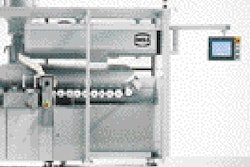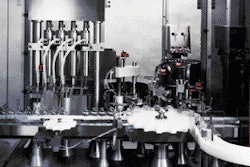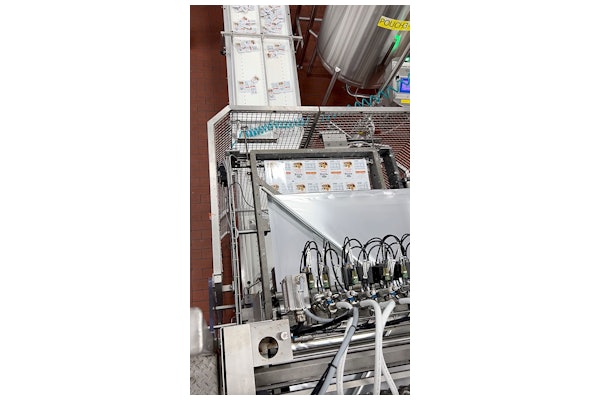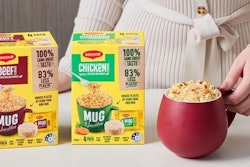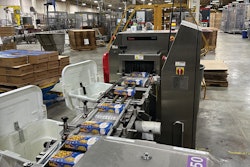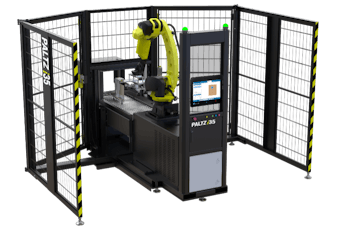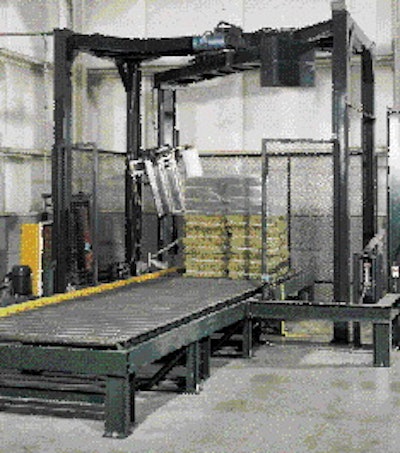
Because dust and debris involved with wrapping bales of hay can cause automatic machines to malfunction, most hay companies use semi-automatic stretch-wrapping equipment to prepare hay bales for overseas shipment. But when Zen-Noh Hay in Pasco, WA, began operation a year ago, it bucked the trend and purchased an automated machine to wrap its Japan-bound shipments. the MA-44 stretch wrapper from Orion (Memphis, TN) was purchased through Carlson Systems (Clackamas, OR). Carlson is the local distributor and supplies the 100-ga low-density polyethylene film on a 30" roll to Zen-Noh Hay.
Kerry Calaway, operations manager at Japanese-owned Zen-Noh Hay, says the goal of cutting downtime and increasing wrapping speed overcame the potential risks of buying automatic equipment.
On semi-automatic equipment, "the operator has to physically get off the forklift, attach the film to the product and start the machine," Calaway says. "After the machine wraps the hay, he has to cut the wrap, attach it to the package, get back on the forklift and pull the load off [the conveyor]."
On the Orion machine, Calaway says the forklift operator simply places the hay on the conveyor, backs up and hits a button to start the stretch wrapper. The wrapper wraps the load, cuts the film and attaches the film to the load without the operator leaving the forklift. "It's a lot less labor-intensive," he says.
And the dust and debris known to plague automatic equipment? "The machine has totally enclosed motors, so dust can't get inside," Calaway says. Plus, a slip ring blow-out valve located above the articulating arm provides a constant air flow to blow dust out of the motors. "Our facility is pretty state-of-the-art, and we try to keep things fairly clean," he adds.
It's a wrap
Before wrapping, Zen-Noh Hay uses a machine to double compress its alfalfa hay bales. That helps the company maximize space on the seagoing container. The bales of hay are stacked in loads, with about eight to 12 bales per load. The load is strapped with plastic bands before the forklift carries it to the Orion stretch wrapper. The forklift sets the load under the wrapper, positioning the load so that the sensors can detect it. The forklift operator then backs up and hits the start button.
First, prestretching to 245% occurs in the carriage of the Orion machine. It then wraps the top third of the load 12 times and the middle six times. An elevating table at the bottom of the conveyor raises the load up 6", and the wrapper completes the package with 12 wraps around the bottom third. The wrapper also creates a 6" to 8" rim of film on the outer edges of the top of the load and underneath it. Such a secure load is necessary simply because the Japanese companies that receive the shipments require the hay to be cocooned in film.
When wrapping is finished, the elevating table descends, and the wrapping machine returns to its home position. A heated knife cuts the film, and as the wrapped load cycles out on the 11' discharge conveyor, a wipe down sweeps the film against the package. The forklift operator then takes the load to the container that will transport it to the boat headed for Japan, where the hay will be used for dairy and cattle feed.
Calaway says Orion's MA-44 wraps about a load of bales each minute, functioning at an average of 50 loads/hr and 350 loads/day. "To produce this amount with the manual system might be possible if using two or three semi-automatic stretch wrappers," he says. Calaway predicts it will take four years for Zen-Noh Hay to earn a return on its investment.




